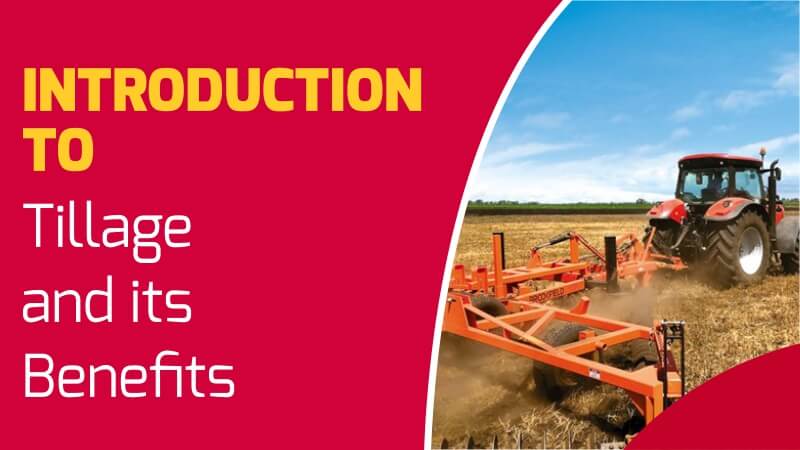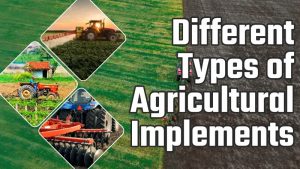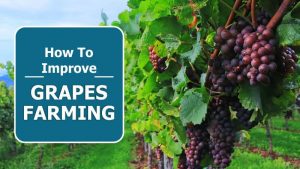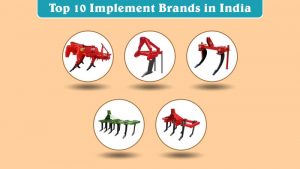Field actions are conducted to boost soil productivity. Another procedure is soil tillage. Due to its direct influence on crop productivity and soil quality, it is one of the agricultural sciences’ most extensively explored areas. On the basis of research evidence, tillage is now being studied as a science, though, in recent years. Let’s first define soil tillage before going further into this subject.
The cultivation or preparation of soil for crop cultivation in a productive soil environment is known as soil tillage. It is accomplished through mechanical soil manipulation, such as digging, turning the dirt, or stirring the soil. The purpose of tillage is to give crops the best possible soil conditions for growth. All of the procedures used to change the physical characteristics of soil are referred to as “soil tillage.”
It is fair to say that soil tillage is the most time-consuming and challenging task in the production of field crops. Additionally, it takes up a sizable portion of the farmer’s money.
The primary objectives of tillage are:
- To make an appropriate seedbed
- To get rid of or kill weeds
- To reduce the threat of weed growth
- To improve the soil’s physical quality To manage insects, other pests, and disease-causing organisms
Physical benefits of tillage and soil improvement
- For a proper seedbed for planting, it is necessary to cut loose, shelter the dense soil to the right depth, and break the clods and crust to an acceptable extent.
- To cover and compact the soil around the seeds or plant propagules.
- To boost percolation or the drying of surplus soil water. To increase the soil’s ability to hold and release moisture for crop plants.
- redistribute the elements that make up the soil, in particular the soil’s particles, organic matter, microorganisms, moisture, and air.
- To keep the soil in its ideal structural condition.
- To include green manure, other organic manure fertilizers, and crop wastes.
- To make the surface of the ground appropriate for quick, efficient, and even water distribution for irrigation and drainage.
- To better aerate the soil, especially in non-capillary areas.
- To lessen soil erosive, deteriorative, and depleting processes.
- To alter the soil’s thermal capacity.
Biological benefits/improvements of soil due to tillage:
- To eradicate larger soil animals, such as rodents, diseases, and insect pests that are spread through the soil.
- To increase the nutritional dispersion.
- The wet zone of the soil is affected by encouraging root respiration in order to enhance root growth by lowering soil penetration resistance.
- To create the ideal environment for seedling establishment and early, consistent growth.
- To better support crop plants’ anchoring and the emergence of store roots and stems underground.
- To promote the development and activity of symbiotic bacteria and other soil-dwelling, advantageous flora and fauna.
- To create the ideal environment for field operations that are required, like uniformly fast, smooth planting and harvesting.
Tillage Types
There are now three different kinds.
- Conventional Tillage
- Conservation Tillage
- No Till
- Conventional
Farmers just turn the soil over to loosen it, making it the simplest and oldest type of soil tillage. Both manually and mechanically, this can be accomplished. Hoes are used manually, and a disc or plough is used mechanically to complete the task. There aren’t many negatives to this kind of tillage. Exposure of soil to air and water erosion is one of the most crucial.
- Conservation
The crop leftover from the previous crop is left on the fields before and after the next crop is planted in this type of soil cultivation. Reducing soil erosion and runoff-related water erosion is the goal of conservation tillage.
- No Till
The zero tillage technique is another name for no till. As the name implies, this method of tillage avoids the soil disturbance caused by instruments like chisel ploughs, field cultivators, ploughs, and discs. Additionally, the soil cover is preserved to stop erosion and moisture loss from the soil.
What is Tilth?:
The end product or outcome is tilth. Tilth is the physical state of the soil that ploughing exposes and which affects crop emergence, establishing growth and development. It is an ideal moisture content loose, friable, airy, powdery, and crumbly soil structure that is good for seed germination.
Characteristics of an ideal/good tilth:
- From the soil surface down to the water table or the raised ground, there should be a continuous system of broad pores through which supplies of water can move quickly and always a quick transfer of CO2 from the soil’s top layer to the atmosphere.
- Before being deployed, these pores should be durable enough to last for several years.
- There should be spaces between these pores that can keep a lot of water against drainage while yet being easily accessed by the plant roots.
- The soil on the surface should be crumbly, and the crumbs should be big enough to prevent blowing away but tiny enough to allow effective seed germination and sufficiently unstick when moist to preserve their distinctive shapes when tractors or other tools pass over them.
Tillage can be further classified into four types:
- Preparatory tillage
- Primary tillage
- Secondary tillage
- Inter tillage
- Preparatory: The tillage process is carried out to prepare the field for growing crops. It entails deep ploughing, soil loosening, and incorporating or uprooting weeds and stables to achieve desired tilth.
- Primary: In preparatory tillage, primary tillage refers to the initial cutting and inverting of the soil after a crop has been harvested, or untilled fallow, or bringing pristine or new land into cultivation. Primary tillage is done between 10 and 30 cm deep. Once, twice, or three times a year are possible. Primary tillage includes ploughs that cut, lift, shatter, twist, and invert soil in order to further prepare it. Primary tillage causes the formation of large soil clods.
- Secondary: The operations are carried out to create a good soil tilth after primary tillage. The dirt is not inverted during this procedure. However, the instinct that is stimulated by breaking clods and crusts, uprooting and removing weeds and root stokes, levelling, preparing rides, farrows, and irrigation drainage channels of field, conserving soil moisture, increasing infiltration and aeration, and checking erosion, post-plough but presiding operation with their stimulating effect of the soil destroy weed seedlings and prevent weed seed germination.
- Inter: The tillage activities are carried out in the field during the field duration, that is, after sowing or planting and before harvesting crop plants. This is also referred to as post-seeding or inter-cultivation of the planting. It involves riding, raking, harrowing, hoeing, weeding, earthing up, and furrowing. The type of inter tillage is shallower.
To get the latest updates on the tractor, tractor price, and tractor news install the KhetiGaadi application.




